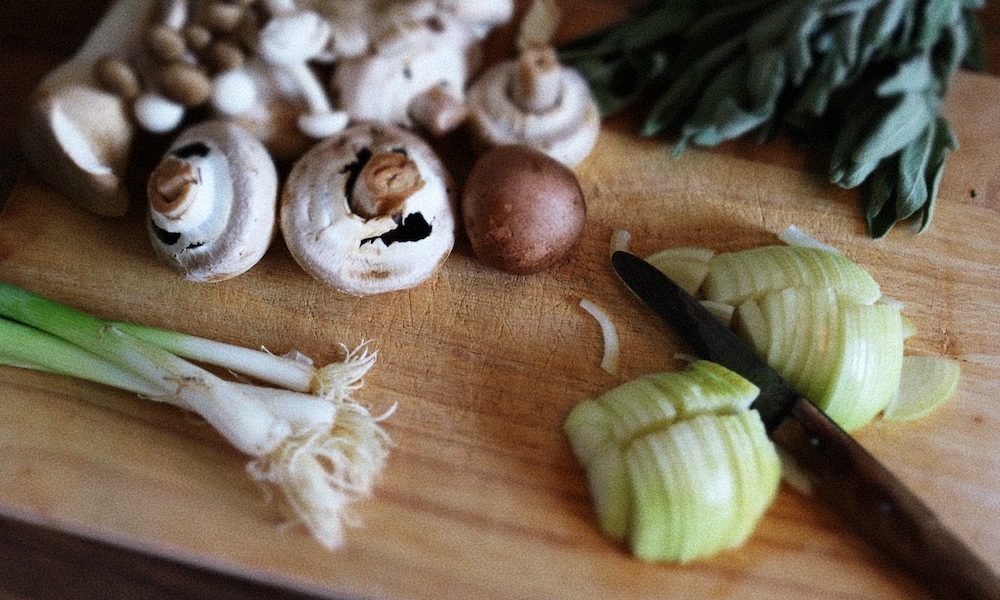Food poisoning can be debilitating, and why it’s important take necessary precautions to minimize the risk. Here’s what you need to keep your food, and yourself, safe.
BY: TAYLOR WOLFRAM, MS, RDN, LDN
Have you heard the saying, “An ounce of prevention is worth a pound of cure?” That can be quite applicable to food safety and preventing foodborne illness!
Let’s be honest, is skipping simple food safety precautions really worth the risk of food poisoning? We don’t need to get into details and can safely assume that no one wants to be stuck on the toilet while holding a bucket or trash bin in front of their faces.
According to the Centers for Disease Control and Prevention, 31 pathogens are known to cause foodborne illness, and there are countless unidentified agents that can cause sickness as well. Approximately 48 million people get sick and 3,000 die from foodborne illness every year in the United States.
Certain populations are at a greater risk of food poisoning due to weaker immune systems, including young children, seniors, people who are pregnant and those with diseases that compromise their immunity (such as HIV and those who are undergoing cancer treatment).
While most foodborne pathogens come from animal foods, that doesn’t mean plant-based foods can’t make you sick. Run-off from animal farms can contaminate water sources used for produce farming, and there may be cross-contamination at the farm during handling in restaurants and in your home. Most pathogens are killed during adequate cooking, but when contaminated fruits and vegetables are eaten raw, that is where you run into trouble.
Luckily, there’s a simple solution: washing.
It’s important to always wash produce before eating, and if there are animal-based foods in your house, always use separate knives and cutting boards. It’s also important to wash your hands before food prep and eating, as well as after using the restroom or handling animal products.
Now that we’ve covered the basics, let’s get to a few more tips to ensure your safety around food.
1. Always refrigerate.
Perishable foods should not be left at room temperature for more than 2 hours or outside in heat 90℉ or higher for more than 1 hour. Hot foods should be held at 140℉ or higher and cold foods should be refrigerated below 40℉ or frozen below 0℉. Temperatures between 40℉ and 140℉ are known as the “danger zone,” where harmful pathogens can multiply rapidly.
Perishable food includes cut/peeled fruits and vegetables, open containers of plant-based milk, meat and cheese, and leftovers. If you have perishable food that will be out of the fridge for more than 2 hours, be sure to pack a cooler and lots of ice or cold packs to keep them below 40℉ (or a warming device to hold hot foods above 140℉). Use a thermometer to ensure temperatures are safe.
2. Don’t thaw foods on the counter.
It’s safest to thaw foods in the refrigerator or in a sealed package in a cold water bath (with water that is changed every 30 minutes). When you let foods thaw on the counter, they’re in that temperature danger zone in which harmful pathogens can multiple. Plan ahead so you have time to thaw foods in the refrigerator, or use the defrost setting on your microwave and consume or cook promptly.
3. Cookie dough isn’t safe, even if it’s eggless.
Eggs aren’t the only raw dough ingredient that can cause foodborne illness. Raw flour has been implicated in some food poisoning cases related to E. coli and the FDA advises against eating raw dough, even if it doesn’t contain eggs. As tempting as it might be, resist sampling your goodies until they’re baked.
4. It doesn’t have to be discarded by the “Use by” date.
Some people get overzealous about food safety and throw away perfectly safe food. Unfortunately, dates on food packaging are confusing. The “use by” date indicates quality, not safety (except for infant formula). “Sell by” does not indicate safety either.
So how do you know how long a food will keep? StillTasty is a handy website that offers guidelines on the shelf-life of different foods (and they source info from the CDC, FDA and USDA). You can also find some information on how long foods will maintain quality. For packaged foods, refer to the manufacturer guidelines on how long foods will keep once opened.
5. Clean-looking water doesn’t mean it’s safe to drink.
No matter how clear and fresh an outdoor water source appears, never drink it without proper sanitation. This also applies to water sources in flooded areas after a storm or hurricane. Tiny microbes may appear invisible, but they can do serious and sometimes life-threatening damage. There are many ways to purify contaminated water, from filters and chlorine tablets to bleach and boiling.
Stay safe out there, my friends!
Adapted from the original article.
HEADER IMAGE: IHSSAN RAMI AZOUAGH
Taylor Wolfram, MS, RDN, LDN is Chicago-based Registered Dietitian who helps others lead a life of compassion that improves their overall relationship with food, exercise, and their bodies. As an expert in eco-ethical and vegan lifestyles, she’s passionate about helping individuals end their struggle with food and live an unrestricted life in the kitchen. Learn more about Taylor at Whole Green Wellness.

